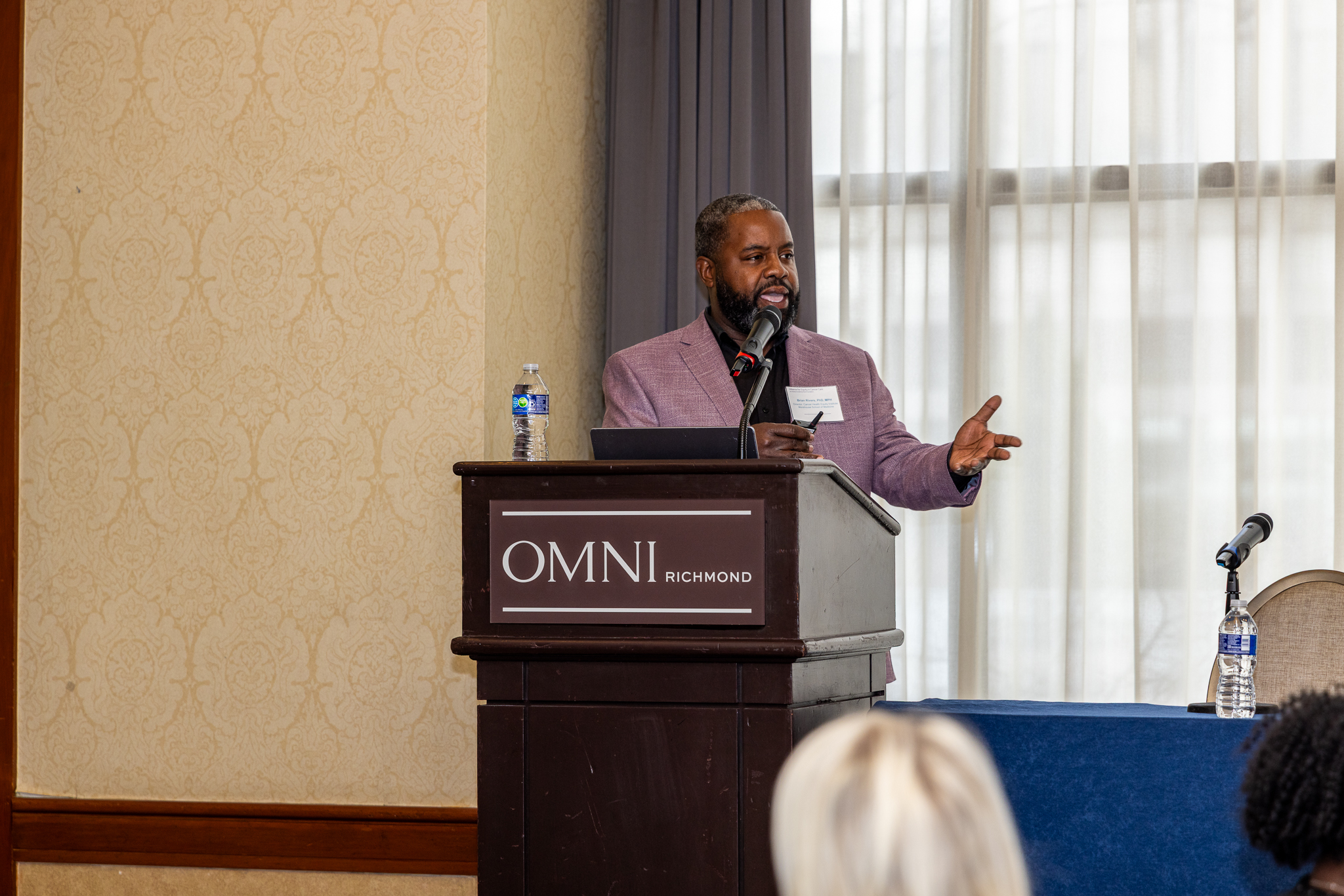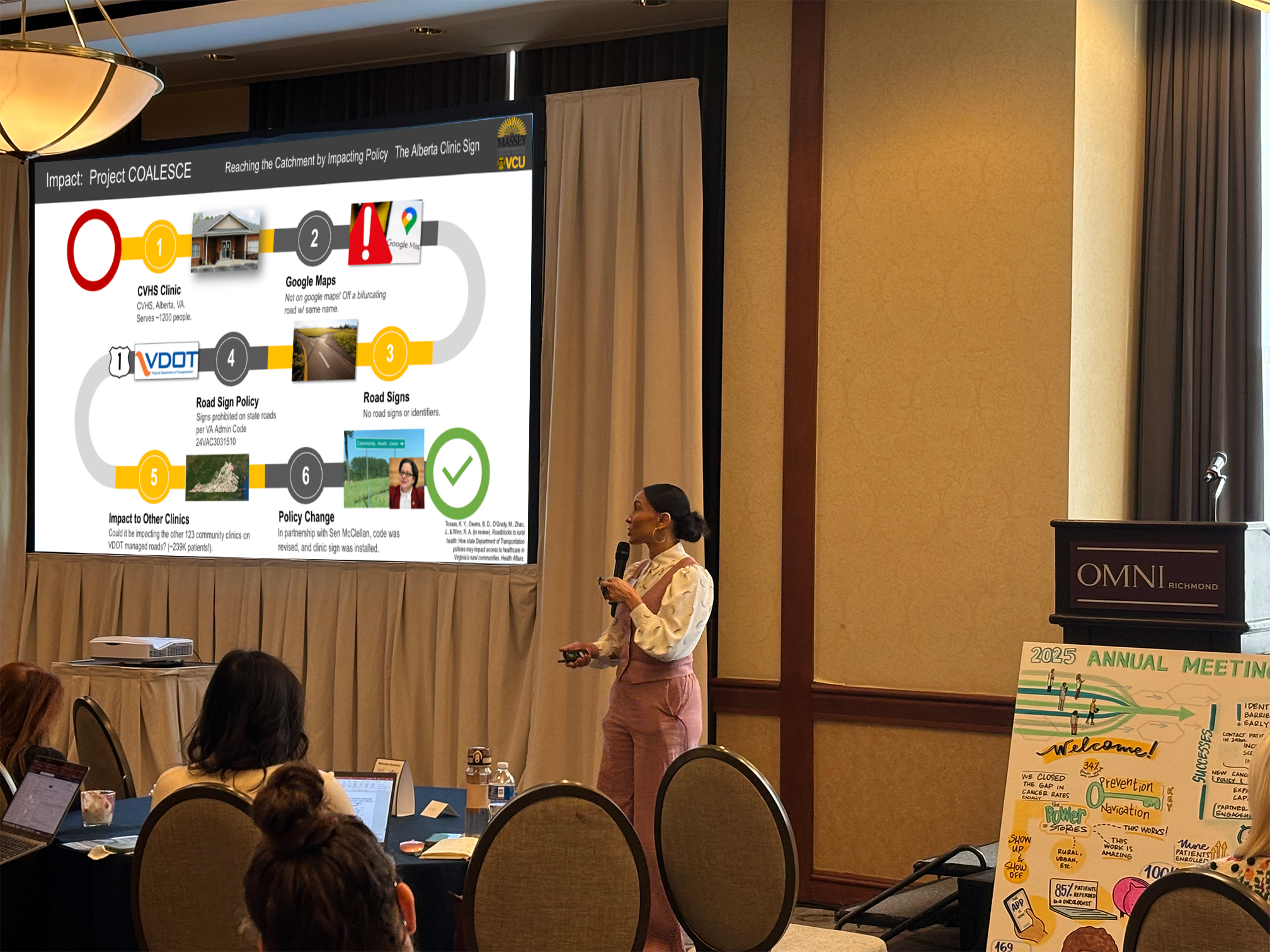Back to Alliance Media and Publications
From Launch to Legacy: Building sustainable cancer care programs
March 25, 2025
Visual aid created by See in Colors (Artist credit: Renatta Algalarrondo) for the 2025 Alliance annual meeting.
Ensuring enduring health care programs
How can health care organizations create sustainable programs that will live long into the future? How do they not only generate impact, but model it for others to come? In short, how can they continue the work?
These are the questions driving the Alliance, an initiative funded by the Merck Foundation, comprising eight national grantees collaborating with community-based organizations to expand access to timely, culturally responsive cancer care.
As the Alliance delves into its fourth of five years, grantees are shifting their focus from individual projects to collective action. Previous efforts concentrated on getting programs off the ground, earning institutional buy-in, organizing workflows and enrolling the first patients. Now, the objective is bolstering these programs while building models that others can replicate.
Thus, sustainability and dissemination frameworks served as the theme for this year’s annual meeting. VCU Massey Comprehensive Cancer Center and VCU Center on Health Advancement, which jointly comprise the National Program Office for the Alliance, hosted the event in Richmond, Virginia on March 10-11. Massey’s Robert A. Winn, M.D., serves as the Alliance Director, and his opening remarks reinforced the urgency of making lasting efforts.
 Brian Rivers, Ph.D., M.P.H. gives the keynote address on creating sustainable programs at the Alliance annual meeting.
Brian Rivers, Ph.D., M.P.H. gives the keynote address on creating sustainable programs at the Alliance annual meeting.
Brian Rivers, Ph.D., M.P.H., director of the Cancer Health Equity Institute at Morehouse School of Medicine, delivered the keynote address, entitled “Equity in Cancer Care: Forging ahead strategically and collaboratively.” A behavioral scientist, Rivers’ work focuses on methodologies to address health disparities and advance health care for all communities.
When it comes to elevating health initiatives, Rivers highlighted the importance of demonstrating impact, whether through new policies, improved service models or changes in knowledge, attitudes and behaviors. To drive change, initiatives need to culminate in measurable improvements on access to care and quality of that care.
“What is the value proposition?” Rivers posited. “Programs and services continue because they are valued, because they draw support and resources. How can you align with other institutional goals to fill the gaps?”
Planning ahead for scalability, along with strong dissemination efforts, are key to advancing programs to the next level. Rivers emphasized knowing an organization’s audience, and their preferred channels of communication.
“Who are you speaking to, for and with?” he asked attendees, encouraging use of communications plans to inform and educate key demographics, while promoting the work being done.
Combining data with community input
More insight came from speaker Katherine Y. Tossas, Ph.D., M.S., director of catchment area data analytics and co-associate director for global oncology at VCU Massey. Tossas spoke on leveraging big data sets to inform policy — while acknowledging that numbers don’t show the full picture.
 Katherine Tossas, Ph.D., M.S., presents on community partnership projects at the Alliance annual meeting.
Katherine Tossas, Ph.D., M.S., presents on community partnership projects at the Alliance annual meeting.
“Statistics tell the story,” Tossas said. “But community holds the truth.”
Through her community partnerships, Tossas’ work has led to transformative policy change. In one of her projects, for example, she found that a rural clinic had low patient numbers because it wasn’t on Google Maps, nor were there any signs or identifiers demarcating it, due to a law prohibiting road signs on state roads. Many community members weren’t able to find the clinic, while others had no idea it existed at all. Upon further investigation, Tossas found the law was impacting more than 100 clinics on state-managed roads. Through a partnership with local legislators, the code was revised and clinic signage installed.
Tossas didn’t go into the project expecting to rally for signs; rather, it was the natural byproduct of finding out what the community really needed.
“Policy without people is just paper,” she said.
As the Alliance moves forward, it will be both data and community voices that improve access to cancer care.
“To be agents of change,” Rivers said. “It takes all of us.”
For more information, see the Alliance fact sheet.
Written by: Meghan Gunn